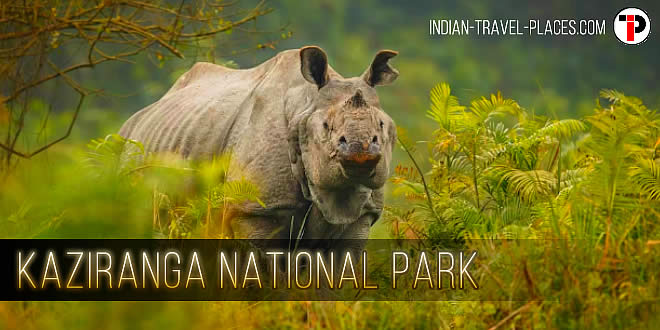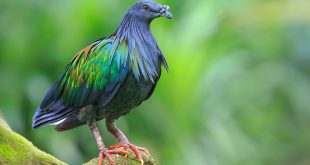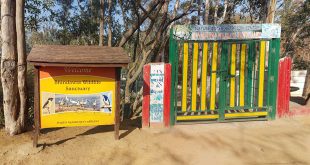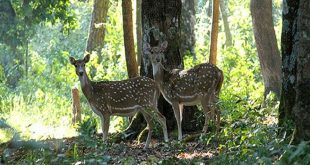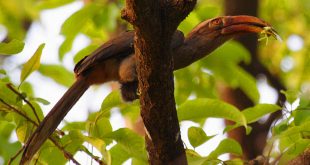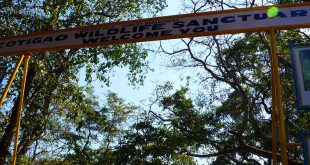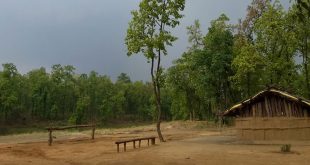Kaziranga National Park is a national park in the Golaghat and Nagaon districts of the state of Assam, India. The sanctuary, which hosts two-thirds of the world’s great one-horned rhinoceroses, is a World Heritage Site.
Kaziranga National Park, Assam, India
According to the census held in March 2015, which was jointly conducted by the Forest Department of the Government of Assam and some recognized wildlife NGOs, the rhino population in Kaziranga National Park is 2,401. It comprises 1,651 adult rhinos (663 male, 802 are females, 186 unsexed); 294 sub-adults (90 males, 114 females, 90 unsexed); 251 juveniles and 205 cubs. Kaziranga is home to the highest density of tigers among protected areas in the world, and was declared a Tiger Reserve in 2006. The park is home to large breeding populations of elephants, wild water buffalo, and swamp deer. Kaziranga is recognized as an Important Bird Area by BirdLife International for conservation of avifaunal species. When compared with other protected areas in India, Kaziranga has achieved notable success in wildlife conservation. Located on the edge of the Eastern Himalaya biodiversity hotspot, the park combines high species diversity and visibility.
Kaziranga is a vast expanse of tall elephant grass, marshland, and dense tropical moist broadleaf forests, criss-crossed by four major rivers, including the Brahmaputra, and the park includes numerous small bodies of water. Kaziranga has been the theme of several books, songs, and documentaries. The park celebrated its centennial in 2005 after its establishment in 1905 as a reserve forest.
User reviewed online profile of Kaziranga National Park, Assam, India. Plan your adventure holiday to Kaziranga National Park armed with information and reviews provided by experts and by users. Find out about when to go, how to get there, what to do, best season to visit, its wildlife, habitat and much more…
What to do in Kaziranga National Park:
Wild Life: One Horned Indian Rhino, Indian Elephants, Indian Bison, Swamp Deer or Barasingha, Hog Deer, Sloth Bears, Tigers, Leopard Cats, Jungle Cats, Otters, Hog Badgers, Capped Langurs, Hoolock Gibbons, Wild Boar, Jackal, Wild Buffalo, Pythons, Monitor Lizards, Oriental Honey Buzzard, Black-Shouldered Kite, Black Kite, Brahminy Kite, Pallas’s Fishing Eagle, White Tailed Eagle, Grey-Headed Fishing Eagle, Himalayan Griffon, Greylag Geese, Bar-Headed Geese, Ruddy Shelduck, Gadwall, Falcated Duck, Red-Crested Pochard, Northern Shoveller
Adventure: Elephant Safari, Sightseeing, Jeep Safari
Where is Kaziranga National Park:
Region: Located on the banks of the mighty Brahmaputra River
Location: Bokakhat, Golaghat District, Assam, India
When & how to get to Kaziranga National Park:
Best Time to Visit: 15 November to 07 April
Getting There: The journey from Guwahati to Kaziranga can also be undertaken by road over distance of 239 km approximately and Guwahati is well connected with all major cities of India.
Nearest Town: Bokakhat
Nearest Airport: Guwahati
Nearest Railway Station: Furkating
Where to stay (Lodges / Guest Houses / Camps / Resorts / Hotels):
Accommodation: Wild Grass Jungle Lodge provides 18 double rooms in jungle lodges. Wild Grass Tented Camp provides accommodation in three tents pegged under high thatched roof amidst an ambience of ruins. The rooms in the Jungle Lodge have attached bathrooms with hot and cold water facilities. Tented Camp has common convenience of bathroom and showers with modern tiles and hot and cold water facility.
In our Database: If you know of a hotel, resort, guest house or camp please add it here. If you own or manage a hotel or resort you can add it to the database for ‘Free’.
Climate & Weather conditions:
Temp: 08° c to 38° c
Rainfall: 2,220.00 cm
Altitude: 65 m
Other details about Kaziranga National Park:
Established: 1974
Area: 430 sq km
Language: Assamese, Bengali, Hindi, English
 ITP Indian Travel Places: Food, Travel, Tourism Business Events and Trade Shows
ITP Indian Travel Places: Food, Travel, Tourism Business Events and Trade Shows
